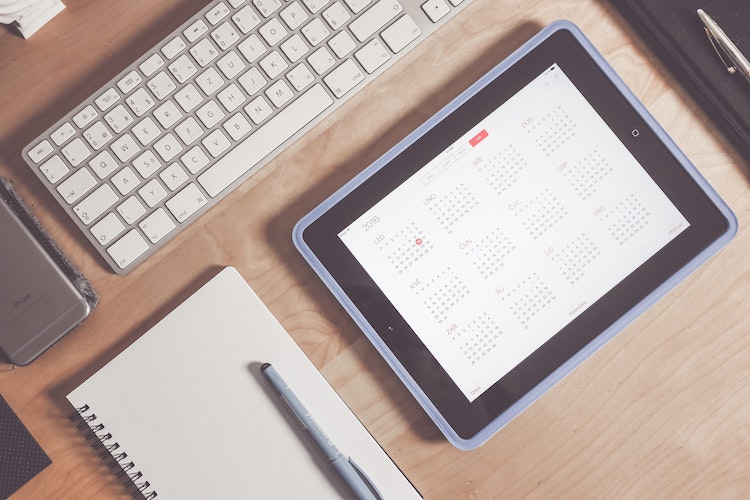All But Dissertation? 7 Steps to Finish Your Degree
There are as many reasons for not completing a dissertation as there are people who live with the regret of not pushing through. In this article, you’ll find our tips for avoiding permanent All But Dissertation status and finishing your degree.
What Does “All But Dissertation” Mean?
Roughly fifty percent of doctoral students leave graduate school without finishing their PhD, mostly in the dissertation stage. This is known as going “all but dissertation,” or “ABD.”
Sometimes, the reasons for not completing outweigh the dismay over the money and time spent on a degree that was never completed. Often, though, the bugaboo is work habits that are not adapted for the unique requirements of the dissertation.
If you’ve made it this far in academia, you know how to write a paper. You likely know how to find sources, create a flow of an argument, form a solid paragraph. But how do you do these things day after day for months on end without tearing your hair out? How do you avoid the inertia that keeps you from your task more and more often until your time runs out?
Approaching the work of the dissertation would make a useful class in grad school. But since few schools offer such a thing, here are seven mind-hacks to help you power through the All But Dissertation stage and finish your degree.
1. Categorize Your Tasks

If you want to avoid permanent All But Dissertation status, you’re going to have to hack your own mind. There are a few simple ways to do this, starting this one: categorize your tasks.
Recognize that there are days your brain is oriented toward writing and days you’d rather do other things. That’s normal. You can leverage this fact by organizing your dissertation tasks into categories so that you can create a non-negotiable daily habit of doing work but then give yourself a choice of what work to do based on your inclination that day.
For Example…
Sarah, for example, was approved to do a comparative study of two schools’ approaches to teaching reading to children in special education classes. Her proposal had been approved, but she knew there was more to do on her literature review, which was her favorite part of the process. She made Lit Review a category and noted threads she wanted to explore further.
But as an introvert, there were other tasks she dreaded, like making phone calls to the schools to arrange visits and meeting the teachers she would be observing. She made categories for Phone Calls and School Visits, listing under each category everything she could think to include.
She also needed to create a supplement to her validated instrument and have the supplement approved by her committee, so she created a Supplement category and listed the steps she would need to take to be able to use this new piece of the data gathering instrument in her research.
We’ll see how these categories come in handy in the next step.
2. Make a Timeline

Once these categories were laid out, Sarah was able to see how important it would be to create a timeline for herself.
There would be no point in scheduling a meeting with a teacher until her supplemental data collection instrument was approved by her committee. It could take a week or six months – it depended on how fast they could get back to her and how good she was at writing questions they would approve.
This realization prompted her to get out her calendar and map out the course of her dissertation. It was May now. If she could get the supplemental instrument approved by the end of July, which seemed reasonable, she could start meeting with administrators and teachers during the before-school work days in August to discuss data collection. That would work well for the school staff, and it would allow Sarah to witness the introduction of the reading curriculum to the students – potentially improving the efficacy of her study.
Making Your Timeline
As you lay out your timeline according to category, your mind is better able to grasp the entirety of the project, which helps you get emotionally excited and eager to dive into work. Your internal schema begins to see how one thing depends on another, so you become more motivated to complete the earlier tasks, even if they are relatively mundane or unpleasant, because you see how these leaving these tasks undone will threaten your entire project.

At this point, you can begin to make a weekly checklist of things that need to get done each week in order to meet the next deadline. Weekly checklists allow you a bit more choice than daily checklists. While you still need to give yourself a mandatory daily (or six-day a week) work session, weekly checklists allow you some daily options.
Mind Hack: The Power of Choice
If you can possibly vary the categories on your weekly checklist, the resistant part of your brain will have less to resist – you’ll always have some choice. If you have children, you’ll know how powerful options can be. When the brain hears “Do you want to wear the red shirt or the blue shirt today?” it does not think about whether or not to get dressed for school, it focuses on the choice of shirt color.
For you, sitting down to work, you can ask yourself, “Do I want to make phone calls today or work on my instrument?” Your brain will then be more likely to make a choice and get to work, rather than pouting about having to work in the first place. Even in the writing phase, choosing a section to write in can be helpful. And remember, you can be writing all along, even before you have your results.
3. Set Up a System That Encourages Focused Work

The Pomodoro Method (named after the Italian creator’s tomato-shaped timer) is a great example of a system that encourages focused work. With this method, you set a timer for 25 minutes, work until the timer goes off, then take a five-minute break before going back to work.
At first, the method may seem arbitrary and even silly. “I was just getting into a flow, and the timer stopped me!” But if you keep at it, you may find that the enforced breaks make you work more efficiently for each 25-minute period. It becomes a race against the clock, and you start churning out pages faster than you knew was possible.
“It’s only 15 minutes!”
The Fly Lady lays out a similar system for cleaning house, asking her followers to choose something to clean for 15 minutes, setting the timer, and forcing themselves to stop for the day after 15 minutes. What does this do? It combats resistance. You say to yourself, “It’s only 15 minutes. I can do 15 minutes, for heaven’s sake.” And once you do that, you start to train yourself to see that it’s not such an awful thing to clean the sink or fold the laundry. The reward is worth the effort.
Similarly, as you practice the Pomodoro Method, you begin to see how efficient you can be in 25 minutes. Your resistance diminishes when you say, “I’ll work on the task I hate for just the first session, then I’ll go back to doing what I love to do.” We all have to deal with the toddler within; making dreaded tasks short is a smart way to work with these little grumps.
4. Give Yourself Small and Large Treats

Rewards are another piece of the motivation puzzle, so when you take your five-minute break, do something pleasant. If you vary your rewards by sensory pleasure (tea at one break, stretches at another), you’ll be making work time infinitely more satisfying.
Just be sure each reward supports continued work and your long-term health. Adding a larger reward for completing your week’s worth of tasks can also be hugely motivating. Maybe this reward could include connecting with the people you love who feel somewhat neglected by your work schedule.
Again, just be sure these end-of-week treats support your overall health and well-being. Getting plastered is probably counterproductive and therefore not a true reward. And zoning out on social media is rarely replenishing, especially if you’ve been working on the computer all day.
5. Add Some Flow

There are other “brain hacks” that might help you power through the All But Dissertation phase. Binaural beats, for example, can help entrain your brain to particular frequencies that promote creativity, focus, or even end-of-the-workday relaxation and sleep.
Binaural beats work by putting tones of one frequency into one ear and a slightly different frequency into the other (headphones required). Your brain entrains to the difference in the frequencies.
To learn more about binaural beats, visit the Binaural Beats Meditation blog. You can find tracks through this site, but you could also opt for an app that offers custom programming. Here is one that you can program with the Pomodoro Method.
6. Remedy Isolation

Writing your dissertation is meant to be a solitary process, showing you can engage with the topic in-depth on your own. That said, isolation can be a problem. It helps to set regular dates to check in with your committee chair or with a coach, so that you can ensure that you’re still on track, that the direction you’re heading makes sense, and that you aren’t wasting time and effort.
Finding a writing buddy is also a good idea. There are Facebook groups offering mutual support for doctoral students in the dissertation phase. Or maybe someone in your university program would be willing to have writing dates at a local coffee shop, where you write for a while and describe your research to them for a while. That’s also good practice for job hunting, a process for which you’ll need to be able to explain your research efficiently.
Try combining social time with movement, so your body gets a break from all the sitting and typing while you connect with a friend or family member. You might enjoy putting on music and dancing together or walking to the grocery store while you debrief your days. Connection will help you stay happy and sane during a process that can get pretty lonely otherwise.
7. Get Help When Needed

If you find yourself stuck, don’t let yourself slack off for too long. You can let the problem sit for a bit, giving your brain time to come up with creative solutions, but you don’t want to lose momentum. Too many people hit a roadblock and slowly let inertia win.
Remember that there are people out there devoted to helping you finish your degree: people who’ve done what you’ve done and know the terrain. Dissertation editors can help you with writing conundrums, while dissertation coaches can help you problem-solve issues with your research or committee requirements. Use these supporters as often as you need to; they cost a lot less than an extra semester of tuition or, worse, years of wasted tuition if you don’t finish.
All But Dissertation: Final Thoughts
So, categorize your tasks, make a timeline, set up a system of work and rewards, try out some resistance-busters and brain hacks, connect with others, and use supports when you need them. That’s how you’ll finish the dissertation and get the degree that unlocks doors.
If you have any questions about your journey or you find yourself in need of one of those supports, feel free to check out our dissertation editing and dissertation coaching services. We’re invested in your success and are here to provide whatever support you need.
 Waiting to Get Your Dissertation Accepted?
Waiting to Get Your Dissertation Accepted?







